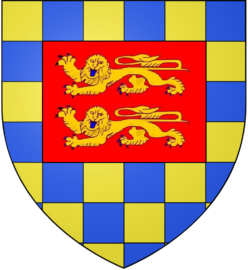The idea to create an association for the preservation of Bellencombre castle was born in England in 2015 during a visit by Lionel Gaudefroy (president of A.S.C.B.), originally of Pays de Bray and Gérard Marchand, a native of Bellencombre.
Visits to Lewes castle and the priory of Pancras of Lewes in East Sussex, followed by a visit to the castle and priory at Castle Acre in Norfolk, both founded by William de Warenne, were the inspiration for creating the A.S.C.B.
These two sites each contained museums which mentionned Bellencombre, our only regret being that the explanation was not in French, a fact we had encountered in Hastings, an area frequented by French tourists. All that remained was to start work in Bellencombre… and to do as well if not better than our English friends !

To start with, it was necessary to acquaint the inhabitants of Bellencombre with the existence and history of the castle, of which most were ignorant. To this end, Lionel Gaudefroy organised two lectures, one in Neufchâtel-en-Bray at the Mathon-Durand Museum on May 21 2016 and on the 950th anniversary of the battle of Hastings in Bellencombre on the same subject, on the latter occasion with the support of the maire and adjuny mayor of the Commune. Present at the last of these were three descendants of William de Warren, one of whom, Nicolas de Warren is today the honorary president of the association.
.
The LOGO of A.S.C.B.
- This logo respects strict heraldic rules and combines the arms of the house of Varenne (Warren in English) without the fleurs de lys of the Vermandois, maiden name of the wife of William II de Varenne, and the two leopards of Normandy.

. Maison de VARENNE : Echiqueté d’or et d’azur

. NORMANDIE : De gueules à deux léopards d’or armés et lampassés d’azur. C’est Richard Cœur de Lion (1157-1199), duc de Normandie et d’Aquitaine, comte du Maine, de la Touraine et de l’Anjou, roi d’Angleterre, un Plantagenêt qui ajouta le troisième léopard à la fin du XIIe siècle. Le nom de Guyenne correspond à la prononciation anglaise d’Aquitaine (Aquitaine > Quitaine > Quiaine = Guyenne) (voir rubrique La langue anglo-normande). Le troisième léopard correspond à celui parfois ajouté de la Guyenne annexée au royaume anglo-normand du fait du second mariage d’Aliénor d’Aquitaine avec Henri II Plantagenêt, parents de Richard Cœur de Lion et de Jean sans Terre (1166-1216), le dernier duc de Normandie jusqu’en 1204. C’est à cette date que Philippe Auguste annexa la Normandie à la France après la prise du plus fabuleux château anglo-normand, Château Gaillard, par ce dernier .

Ironie de l’Histoire : Pendant 300 ans, de Henry II (1152) à Henry VI (1445), tous les rois d’Angleterre sans exception ont épousé des reines choisies en France.
